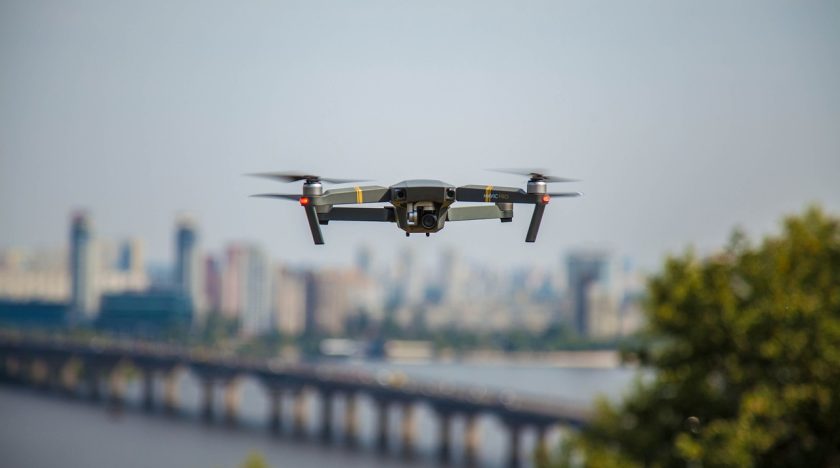The European Commission has previously said that there is heightened potential for misuse of UAS and cited examples such as breach of privacy rules, espionage, hijacking of telecommunications signals and mass disruption via the carriage of biological or chemical agents.
Now, a new report from the Counter Terrorism Preparedness Network (CTPN) says there is a need for public authorities to prepare for the increasingly complex threat from unmanned aerial systems (UAS). It adds that hostile drones need to be recognised as potential improvised explosive devices (IEDs) that could be triggered upon landing.
CTPN is an international collaboration, currently funded by the City of Stockholm in partnership with London and Washington, D.C. The report, Preparing for Hostile Drones in Urban Environments, notes that there is potential for the use of UAS by terrorists to increase through small off-the-shelf devices. Indeed, the so-called Islamic State group has been using UAS in the battlefield since 2017 and Hezbollah and Hamas have been widely reported to be stepping up their aerial drone use in recent months.
Inspired by such uses, terrorist groups and lone actors are looking at ways in which UAS could help them carry out their objectives. Coupled with the availability of low-cost alternatives to military drones, this creates a ticking time bomb where a holistic approach to countering such use is needed. Consumer drones can be converted into potentially lethal weapons with fairly simple modifications, and there are guides and videos online to show how this can be done.
In addition to the terror threat, drones are also used to commit crimes such as bank heists and smuggling contraband into prisons, and the risk of disruption to air travel persists.
To counter these threats, CTPN calls for a stronger relationship between urban planning and protective security and says the concept of securing the skies above urban areas needs to be integrated into city strategies from security to development.
The organisation’s report says that identifying the right counter-UAS system is extremely nuanced and would require repeat testing to understand its full capability across various scenarios. Even then it could be outsmarted by a rogue drone, especially when beyond the virtual line-of-sight or if a swarm is deployed.
Projects are underway, the report states. The UK National Protective Security Authority has been testing C-UAS technologies since 2019; the European Commission-funded Project COURAGEOUS seeks to develop a standardised test methodology for drone detection, tracking and identification systems; an INTERPOL project in Norway tests 17 countermeasures; and additional European Commission projects, such as SKYFALL and DroneWISE have increased efforts to bring public and private sector together. But CTPN says these types of initiatives need translating and implementing at a local level.
In the United States, the US National Football League now has a policy to stop a game and clear the field if drones are spotted. This policy highlights the difference between airspace that may be protected by legislation and that which is not formally restricted. CTPN notes that this is an important local consideration when planning C-UAS policy and adds that specific sites, such as sports stadia, could employ simple measures like covers and reflectors to shield against drone activity.
In urban environments, resourcing and staffing implications need to be considered carefully, the report says. For example, some C-UAS systems require constant monitoring whereas others only require operator attention when an incident occurs. CTPN suggests that while geofencing may be an effective prevention in some cases, it would need to be supported by statutory legislation and laws.
Highly populated and changing civilian environments like city centre squares pose even more challenges. As CTPN’s report notes, “although the traditional approaches associated with layered protective security at ground level, a range of gaps and challenges emerge just a few feet in the air. The report cites the example of King Charles’ coronation in London. For the event, drones were banned over central London and police had C-UAS capabilities in place. But even then, the threat remains, and it was a human eyeball rather than technology that spotted a small UAS flying in the restricted airspace. And of course, should a drone operator have malicious intent, a flying ban would not prevent them from carrying out their attack.
Another challenge is clarifying ownership of the airspace above cities, the report notes, determining whether it is the responsibility of a local authority or the national civil aviation authority.
The “speed, accuracy and conviction to intercept and/or immobilise hostile drones in urban environments is key to preventing an attack”, CTPN says, adding that this demands an increase in both static and mobile C-UAS measures as well as response drones that could be deployed for drone-to-drone combat. It acknowledges however that differentiating between legitimate and rogue drones will become more difficult – yet also more important – as the airspace becomes increasingly crowded. One tactic is to mandate registered drone operators to install specific and approved LED tags. Another approach, CTPN suggests, is to compartmentalise cities into response zones with dedicated hubs to help manage the scale of the problem.
The report calls for local authorities to assess the threat posed by drones, identify likely target points, understand potential threat actors and their capabilities, determine which drones are likely to be used and how they would be flown, and analyse the findings to provide a scenario-based risk rating to inform further actions.
CTPN says that while the threat of hostile drones in urban environments is relatively low, it needs to be taken seriously now as the landscape could be very different in 10 or 15 years. A multi-agency approach now would enable cities and their authorities to be ahead of the curve. The core challenge, CTPN says, is achieving the political buy-in, prioritisation and investment needed.
For more information




